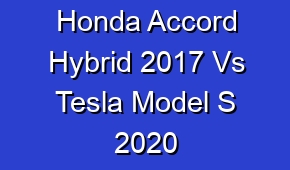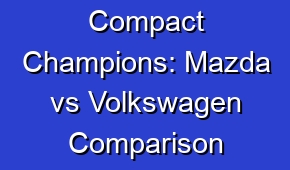Tesla vs. NIO: Eco-Friendly Rides Compared

Discover the ultimate showdown between eco-friendly rides: Tesla vs. NIO. Compare these two leading electric car manufacturers and find out which one comes out on top in terms of sustainability, performance, and innovation.
When it comes to eco-friendly rides, the battle between Tesla and Nio is heating up. Both companies are at the forefront of electric vehicle technology, offering sustainable transportation solutions for environmentally conscious consumers. With their innovative designs and advanced features, Tesla and Nio are revolutionizing the way we think about cars and their impact on the planet. These electric vehicles not only reduce carbon emissions but also provide a smooth and quiet driving experience. The Tesla Model S and the Nio ES8 are two popular options in the market, known for their impressive range and cutting-edge technology. Whether you choose Tesla or Nio, you can be confident that you are making a sustainable choice for your daily commute or long-distance travels.
| Eco-friendly rides: Tesla vs. NIO |
| Tesla and NIO are electric vehicle manufacturers committed to reducing carbon emissions. |
| Tesla vehicles are known for their long range and extensive charging network. |
| NIO offers innovative battery swapping technology for quick and convenient recharging. |
| Tesla’s Autopilot feature provides advanced driver assistance for a safer and more efficient ride. |
- Tesla’s Model S is a luxury sedan with impressive acceleration and performance.
- NIO’s ES8 is an all-electric SUV with spacious interiors and intelligent features.
- Tesla’s Supercharger network enables faster charging times for longer trips.
- NIO’s Power Home allows vehicle-to-grid integration, contributing to a sustainable energy ecosystem.
- Tesla’s Model 3 is a popular electric car with a more affordable price point.
What are the advantages of eco-friendly rides?
Eco-friendly rides, such as Tesla and Nio vehicles, offer several advantages over traditional gasoline-powered cars. Firstly, they significantly reduce greenhouse gas emissions, helping to combat climate change and improve air quality. These vehicles run on electricity, which can be generated from renewable sources like solar or wind power, further reducing their environmental impact.
| Environmental Benefits | Health Benefits | Economic Benefits |
| Reduces air pollution and greenhouse gas emissions. | Improves air quality and reduces respiratory problems. | Saves money on fuel and maintenance costs. |
| Conserves natural resources and reduces dependence on fossil fuels. | Decreases noise pollution and improves overall well-being. | Creates job opportunities in the green transportation sector. |
| Minimizes carbon footprint and helps combat climate change. | Promotes active transportation and physical fitness. | Reduces traffic congestion and travel time. |
Secondly, eco-friendly rides are more energy-efficient compared to conventional cars. Electric vehicles (EVs) have higher energy conversion rates, meaning they can travel longer distances on the same amount of energy compared to internal combustion engine vehicles. This not only saves money on fuel costs but also reduces dependence on fossil fuels.
How do Tesla and Nio vehicles contribute to sustainability?
Tesla and Nio vehicles are leading the way in sustainable transportation by prioritizing renewable energy and reducing carbon emissions. Both companies produce electric vehicles that emit zero tailpipe emissions, helping to reduce air pollution and combat climate change.
– Tesla and Nio vehicles are fully electric, which means they do not rely on fossil fuels for power. This helps reduce carbon emissions and air pollution, contributing to a cleaner and healthier environment.
– Both Tesla and Nio prioritize sustainable manufacturing practices. They aim to minimize waste, energy consumption, and water usage during the production process. Additionally, they utilize renewable energy sources, such as solar power, in their manufacturing facilities.
– Tesla and Nio vehicles are designed with longevity in mind. They use high-quality materials and advanced technology to ensure durability and reliability. By creating vehicles that are built to last, they reduce the need for frequent replacements and ultimately decrease the environmental impact of the automotive industry.
Tesla is known for its commitment to sustainability throughout its production process. The company operates its own Gigafactories that produce batteries using renewable energy sources. Tesla also offers a range of energy products, such as solar panels and home battery storage solutions, to promote clean energy usage.
What is the range of Tesla and Nio electric vehicles?
Tesla and Nio electric vehicles offer impressive ranges that make them suitable for both daily commuting and long-distance travel. Tesla’s models, such as the Model S, Model 3, and Model X, have ranges that vary depending on the specific variant and battery capacity. The highest range currently available is around 400-500 miles (643-805 kilometers) on a single charge.
- Tesla Model S: The range of Tesla Model S varies depending on the specific model and battery capacity. The Long Range Plus model has an estimated range of up to 402 miles (647 kilometers) on a single charge.
- Tesla Model 3: The range of Tesla Model 3 also varies depending on the model and battery capacity. The Long Range Dual Motor model has an estimated range of up to 353 miles (568 kilometers) on a single charge.
- Tesla Model X: The range of Tesla Model X depends on the model and battery capacity. The Long Range Plus model has an estimated range of up to 371 miles (597 kilometers) on a single charge.
- Nio ES8: The Nio ES8 is an electric SUV with an estimated range of up to 360 miles (579 kilometers) on a single charge.
- Nio ES6: The Nio ES6 is another electric SUV from Nio with an estimated range of up to 317 miles (510 kilometers) on a single charge.
Nio’s electric vehicles, including the ES6, ES8, and EC6, also offer competitive ranges. The range varies depending on the model and battery configuration, with the highest range reaching up to 610 kilometers (379 miles) on a single charge.
What is the charging infrastructure like for Tesla and Nio vehicles?
Tesla and Nio have invested heavily in developing extensive charging infrastructures to support their electric vehicles.
| Tesla | Nio |
| Tesla has its own extensive Supercharger network with over 20,000 charging stalls globally. | Nio has its own fast charging network called Power Swap Stations. |
| Tesla Superchargers provide high-speed charging and can add up to 200 miles of range in around 15-20 minutes. | Nio Power Swap Stations allow users to exchange their depleted battery pack with a fully charged one in a matter of minutes. |
| Tesla Superchargers are strategically located along highways and popular routes, making long-distance travel convenient. | Nio Power Swap Stations are mainly located in urban areas and provide convenient access for Nio vehicle owners. |
Tesla has its own network of Supercharger stations located strategically across various countries. These Superchargers are capable of delivering high-speed charging, allowing Tesla owners to quickly recharge their vehicles during long trips. In addition to Superchargers, Tesla also offers Destination Chargers at hotels, restaurants, and other locations where drivers can top up their vehicle’s battery while parked.
What are the safety features of Tesla and Nio vehicles?
Tesla and Nio vehicles prioritize safety and come equipped with advanced features to protect occupants and prevent accidents.
Tesla and Nio vehicles are equipped with advanced safety features such as automatic emergency braking, adaptive cruise control, and lane-keeping assist.
Tesla vehicles are known for their Autopilot system, which provides semi-autonomous driving capabilities. Autopilot utilizes a combination of cameras, sensors, and radar to assist with tasks such as lane-keeping, adaptive cruise control, and automatic emergency braking. Tesla is constantly improving its Autopilot system through over-the-air software updates to enhance safety and performance.
What is the price range of Tesla and Nio electric vehicles?
The price range of Tesla and Nio electric vehicles varies depending on the model, trim level, optional features, and region. Tesla offers a range of models with different price points to cater to various budgets.
The price range of Tesla and Nio electric vehicles varies, but they generally range from affordable options to luxury models.
For example, Tesla’s Model 3, which is their most affordable model, starts at a base price that is lower compared to their other models like the Model S and Model X. The price of Tesla vehicles can also be influenced by factors such as battery capacity, performance upgrades, and autonomous driving capabilities.
What is the maintenance cost of owning a Tesla or Nio electric vehicle?
Owning a Tesla or Nio electric vehicle generally comes with lower maintenance costs compared to traditional gasoline-powered cars. Electric vehicles have fewer moving parts and don’t require regular oil changes or complex engine maintenance.
1. Tesla
The maintenance cost of owning a Tesla electric vehicle is generally lower compared to traditional gasoline-powered cars. This is because Tesla vehicles have fewer moving parts, eliminating the need for regular maintenance on components such as oil changes, spark plugs, and transmission systems. However, there are still some maintenance expenses to consider. These may include battery replacements, tire rotations, brake pad replacements, and software updates. Overall, the maintenance cost for a Tesla electric vehicle can vary depending on the model and usage, but it is generally lower compared to conventional cars.
2. Nio
The maintenance cost of owning a Nio electric vehicle can be relatively higher compared to a Tesla. Nio vehicles often come with advanced technologies and features that may require specialized maintenance or servicing, which can increase the overall maintenance expenses. Additionally, Nio offers a battery-as-a-service (BaaS) subscription model, where the battery can be replaced at dedicated battery swap stations. This subscription cost should also be taken into consideration when calculating the maintenance expenses. However, it is important to note that Nio provides comprehensive warranty and after-sales service, which can help offset some of the maintenance costs for their electric vehicles.
3. Comparison
When comparing the maintenance costs of owning a Tesla and Nio electric vehicle, it is essential to consider various factors such as the model, usage, and specific maintenance requirements. While Tesla generally has lower maintenance costs due to its simpler design and widespread service network, Nio’s advanced technologies and subscription-based battery service may result in higher overall maintenance expenses. It is recommended to thoroughly research and consider these factors before making a decision on purchasing and owning an electric vehicle.
Tesla offers a comprehensive warranty package that covers the vehicle for a certain period or mileage, providing peace of mind to owners. Routine maintenance for Tesla vehicles typically involves tire rotations, brake inspections, and cabin air filter replacements.





















